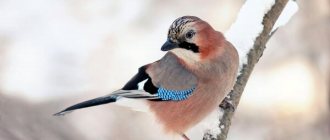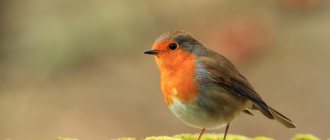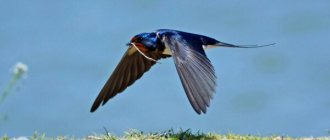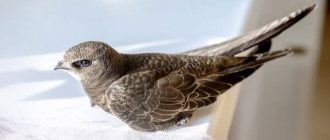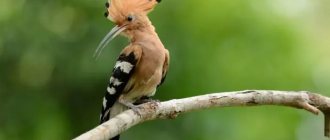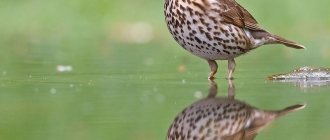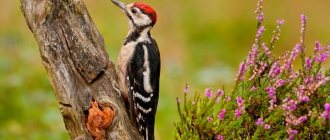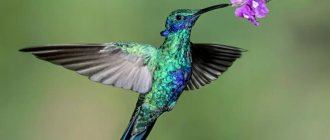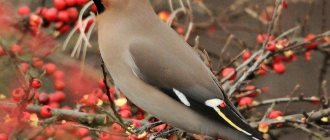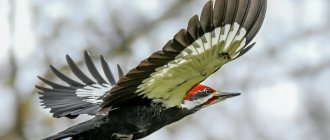general description
Now it is difficult to say unambiguously where the name jay came from. Presumably, it arose due to the shining plumage. Jays are bred into a separate genus and belong to the corvids along with jackdaws, crows and rooks.
Appearance
The size of the jay resembles a jackdaw - up to 37 cm in length including the tail. The average weight is about 150 g, and the wingspan is 55 cm. There are larger and smaller individuals, and in addition, different species differ.
Jays have a reddish-brown body with a slight pink tint and bright blue feathers on the sides. They have a black tail and wing tips with white accents, and an equally dark beak.
The jay has a funny crest on its head, which becomes even more disheveled if the bird is excited. They have loose, fluffy plumage, which makes the body appear larger than it actually is. The large beak and thin, tenacious fingers with sharp claws stand out.
Photo: photonomy.ru
Juveniles: differences
Male and female jays are practically the same, except that males are slightly larger. But very young birds can be distinguished. They do not have such contrasting and bright plumage, and also have dark brown eyes, which become blue with age.
Photo: krasivosti.pro
Singing
Their “native” trills of jays are quite specific and resemble a set of sharp, grinding sounds. But the bird is an excellent learner and can copy almost anything, even human speech. For this they are called mockingbirds.
Photo: krasivosti.pro
How long do jays live?
In their natural environment, jays live 5-7 years, but this period can be extended even 2-3 times. Chicks raised in captivity from an early age live up to 20 years. It all depends on how comfortable the conditions are.
Photo: pinterest.ru
Captivity
Common jays tolerate captivity well, but require spacious enclosures, as they are quite large birds. They become attached to their owner, quickly learn to repeat words and even entire phrases, and make funny sounds, imitating the telephone.
In a cramped cage, birds break their beautiful feathers and lose their attractive appearance. In captivity, they need to either fly freely around the house or be kept in a spacious enclosure.
When your pet is allowed out to exercise, it needs supervision. A stray bird, playing, tears up books and wallpaper, throws everything it can throw onto the floor.
The bird is easy to tame; it will repeat the words of its owner.
By the way: “Mockingjay,” the novel by S. Collins that concludes the “Hunger Games” trilogy, is named not after a real species of bird, but after the name of a fantastic mutant that was bred during the rebellion.
Types of jays
Due to the diversity of species and the ability to adapt to any conditions, jays are one of the most numerous birds in our latitudes. Today we’ll talk about the most common types!
blue jay
Those with the most expressive crest and bright blue plumage instantly attract attention. Their belly, underwings and undertail are white or gray.
Photo: culture.ru
green jay
This is a variety from warmer climes, and is perhaps the most colorful and exotic of all jays. Its plumage intertwines all shades of yellow, green and blue.
Photo: egyptsons.com
Decorated jay
A true exotic in its own right, it is painted in a whimsical purple-brown hue with white and blue stripes. In contrast, there is a white beak and white paws.
Photo: commons.wikimedia.org
Crested Malayan jay
There is no blue in its black and brown plumage with white accents, a rarity among jays. But there is an amazing long crest, thanks to which it is impossible to confuse this bird with someone else.
Photo: wiki2.org
Saxaul jay
A desert inhabitant that is found only in certain regions of Kazakhstan and Central Asia. They are greyish, with a black tail and wing tips, fly poorly and feed mainly on scorpion spiders.
Photo: andrey-eltsov.ru
Steller's jay
It is also called the blackhead and is entirely colored in unusual shades of black and blue. Right down to the paws and beak. This jay lives mainly in America and feeds on small animals.
Photo: dic.academic.ru
Crested jay
Another owner of an outstanding crest, which resembles either a mohawk or a crown. These jays are black and white, with bright orange eyes.
Photo: pinterest.ru
Birds of the Moscow region: photos, names and descriptions (catalog)
Feeding
Unfeathered chicks
To feed chicks from the first day, liquid mixtures are made from bananas and other fruits and berries, soaked puppy food, crushed insects (mealworms, crickets), boiled eggs and ground calcium carbonate (chalk), and probiotics.
To prepare this mixture, all ingredients are ground together in a blender. Starting from the third day, insects should be given separately in their entirety.
From the very first days, chicks of corvid birds should be given mice . Internal organs are given (including intestines), small pieces of muscle with bones (without skin) are given.
Feathered chicks and fledglings
For already grown chicks (which already have noticeable stumps of flight and tail feathers), the mixture is made thicker and raw vegetables, ground in a mixer or grated on a fine grater, are added. This mixture can be stored ready in the refrigerator for 2 days, heating it in the microwave before feeding (but do not make the mixture hot, so as not to burn the esophagus). Or make it fresh every time.
Attention! Mixtures and mash are used only when there is a shortage of normal feed. If you always have access to live food insects, food mice, small river fish, the mixture is only a reserve food. Those. when there was a shortage of basic feed.
If you receive a fully feathered chick of a crow, magpie, raven, rook, jackdaw, jay, then there is no need for liquid mixtures to feed it. Such chicks must be fed with a solid mash, from which small balls are rolled, convenient for putting into the beak, whole insects, pieces of mice and quails. The most important components are insects, pieces of mice and quail. The mash is only an addition and a convenient substrate for adding drugs and probiotics. Berries are given whole, vegetables and fruits are given in cut pieces of convenient size.
In this video, Nika Zubra very popularly explains about a fledgling gray crow that found itself at home. Even here it is clear that for home conditions, the crow is a very uncomfortable pet.
A mash for feeding chicks of all types of corvids is made from cottage cheese with a medium fat content of 5-9%, to which finely grated carrots, beets, sprouted grains, dry gammarus or daphnia, and edible clay are added; All components are mixed in equal proportions, mixed thoroughly and the mixture is rolled into balls or short sticks. You can roll out balls in advance in the morning so that, for example, you can take the chick to work and feed it there.
During the day, feeding mash should make up no more than 40% of the chick's total diet; the rest of the volume is taken up by fresh insects (forage or wild-caught), chopped pieces of mice and quail.
Adult mice are required; naked mice cannot be used to feed chicks. Chicks need to be given bones, muscles, internal organs, including intestines. Mice can and should be given whole to adult chicks and fledglings of carrion crows, large-billed crows and piebald crows. For chicks of hooded crows, jackdaws, magpies, rooks, mice should be cut into small pieces, and the internal organs and intestines should be given separately. Please note: since you have taken on the responsibility of feeding wild birds, mice must be “humanely slaughtered” before feeding them to the birds.
Quails are also given whole, including bones and internal organs. To do this, you can buy chilled quail carcasses in supermarkets. It is better not to give quail intestines to chicks in order to maintain a low bacterial contamination of the room (in other words, so that everything around is not contaminated with the contents of the quail intestines). The quail carcass should be given to fledglings and adult corvids in its entirety.
A good and important addition to the diet of chicks of all ages is small freshwater fish. The fish should also be given whole.
All vegetables, fruits, berries are useful for growing chicks. They must be given raw.
It is not recommended to give earthworms and slugs, since these worms are intermediate hosts of lung helminths and syngamus; For chicks, these worms can be deadly, as they clog the trachea.
It is important to remember that the chicks must not only be fed, but also watered. At high temperatures, the chick, suffering from thirst, tears off its beak. But even if the chick does not open its beak, offer it water once an hour. You need to give water to the chicks while they are drinking with pleasure, even if it seems to you that there is too much water.
The older the chick gets, the more its diet begins to resemble that of adult corvids. You can read about how to feed adult crows, jackdaws, magpies, ravens, rooks, and jays in this section “Feeding corvids.”
Vitamins, antibiotics, anthelmintics, antiparasitic drugs, calcium supplements are given strictly as prescribed by the avian doctor, who supervises the development of the chick. Giving all these drugs on your own is dangerous for the life of birds.
Some lovers of corvids hunt wild birds to feed their chicks, destroying nests to get chicks - I consider this unacceptable. Firstly, using wild animals for feeding, there is a significant risk of chicks becoming infected with infections and parasites. Secondly, it is not permissible to destroy wild animals to satisfy your desire to feed a crow. Precisely a whim, since anyone who undertakes to feed chicks must understand that he is doing this only because he decided to interfere with the cycle of nature. The chick you have chosen does not participate in ecological chains; it is already lost to the ecosystem, and your moral motives are important only to you.
Lifestyle
Jays are mentioned in legends and stories of different peoples of the world. And all because they have always been very common, and have always stood out for their imitation skills.
Habitats
The jay is distributed almost everywhere: from Japan and China through all of Eurasia and all the way to North Africa. It is not found except in the tropics, because it is a forest bird. They prefer mixed forests to live. By winter, jays often move closer to people in search of food.
Photo: krasivosti.pro
Diet
Jays eat almost everything. Their strong beaks allow them to crack nuts and acorns, and they also love berries, buds, seeds and peas. In addition, they prey on beetles, caterpillars and larvae, and some species even hunt small rodents and frogs.
Jays are able to store food by carrying it in a small pouch under their tongue. They hide food in shelters and camouflage themselves with moss and leaves. Surprisingly, such a tiny bird can collect up to 4 kg of food per season.
Photo: andrey-eltsov.ru
Wintering
Jays are migratory birds, but in fact they do not really like to roam from place to place. Therefore, in warm regions they do not fly away for the winter at all. Migrations are associated only with unsuitable climate or lack of food.
Photo: andrey-eltsov.ru
Captivity
Jays can be kept in captivity, but a small chick needs to be tamed, because in the case of an adult this is no longer possible. They can be kept strictly one at a time, in a large spacious cage and with regular walks every 4 hours. Jays love being sprayed with warm water, but are not at all picky about food.
Photo: mybirds.ru
Birds of the Leningrad region: photos, names and descriptions (catalog)
What does it eat?
— Advertising —
Jays eat both plant and animal foods with equal appetite. The birds have taken root well in oak forests and feed on the fruits of these trees. They love acorns. Their sharp-edged beak is able to successfully pierce these fruits without any inconvenience. Small animals they eat include: lizards, frogs, eggs of other birds, and small birds. From the outside, jays look leisurely and graceful. Their flight does not differ in speed and temperament. But if their target of prey is a small bird that is just learning the lessons of flight, then the jay will turn on its vigilance - the victim will not escape. Jays are famous for their thrift. In their passion for accumulation, they are similar to grosbeaks, who also love to make large reserves of food. Their favorite delicacy that they always want to hide is acorns. The location of the stash can be very different: under a tree, near a grotto, in a pile of old leaves. During the autumn season, jays accumulate up to 4 kilograms of acorns. The fact is that birds do not always leave their nests when winter comes. The thirst for accumulation is understandable - birds protect themselves from hunger. The snow-covered forest leaves no chance of finding good food, so in winter the birds begin hunting weaker representatives of the fauna. Jays interestingly hunt for small goose from under the oak bark. They stick their beak into a place where there is a crack and begin to split until they get what they want. Jays have fighter enemies - squirrels - they find birds' stashes, and steal the birds' supplies without shame. On the eve of a hungry winter, jays leave the forest and move closer to to private homes in the hope of finding complementary food. But these birds are mostly forest birds. Having chosen oaks and a balanced way of life, they rarely fly outside the forest. The jay’s voice is very similar to an alarming squeak: “cre-cre-rahh-rahh.” The bird can imitate other birds and even the voice of a person.
Reproduction of jays
Jays enter the mating season already in the first year of life. In early spring, males compete in their song talents to attract females. In April, pairs form a nest, or they can use last year’s old ones.
Most often, jays hide their shelters higher - at a height of 5 m. Closer to the ground, they nest only in dense bushes, where they cannot be detected. Within a week, a cup-shaped nest with a diameter of about 20 cm is ready.
One clutch usually contains from 5 to 7 greenish eggs up to 3 cm. If the first clutch was destroyed before the onset of summer, the female creates another one. The pair take turns incubating their chicks, and this is the only time of the year when the noisy jays can be called truly silent.
Jay chicks have an excellent appetite, so parents have to try hard. Otherwise, part of the brood may die. The chicks show independence by 4 weeks, but their parents take care of them all summer.
Photo: rasfokus.ru
Male and female
Courtship season falls in the spring months. Depending on the species, jays can mate for life, or they can mate only to create offspring. Sexual dimorphism is weakly expressed and is noticeable only when the male is larger. Spouses can also be distinguished by their lifestyle - females hatch eggs, and males, at this time, look for food.
Natural enemies
The jay is in itself a dangerous enemy for many small birds, especially during the nesting period. But at the same time, they rarely become objects of hunting for other predators, because they are very careful and timid.
But human activity poses a real threat to jays. Shooting, nest destruction, dangerous pesticides, crop protection traps - all this leads to a decline in the population.
Photo: placepic.ru
Nightingale (60 photos): description, habitat and what it eats
What to do if the chick falls out of the nest?
If you realize that the chick is really in danger and bring it home, and there you find that it is injured, you must definitely take it to the veterinary clinic. This is interesting! If help is needed, it will definitely be provided and all the necessary recommendations will be given. After this, the chick can be “nursed.”
Interesting materials:
How to choose Chinese cabbage for salad? How to choose Chinese cabbage in the store? How to choose a plastic muzzle for a dog? How to choose tiles for a small bathroom? How to choose a pillow for side sleeping? How to choose increased Tinkoff Cashback? How to choose increased cashback in the Tinkoff app? How to choose the correct direction for opening doors? How to choose a right or left entrance door? How to choose yarn for toys?
Jay - bird photo
There is a reason why jays are loved for the beauty of their plumage. Just look how charming they are in their elegant simplicity!
Photo: pinterest.ru
Photo: culture.ru
Photo: nl.pinterest.com
Photo: vfl.ru
Photo: pinterest.ru
Photo: fotokto.ru
Photo: fotokto.ru
Photo: fotokto.ru
Photo: funart.pro
Photo: birds.kz
Photo: clasbio.ru
Photo: clasbio.ru
Photo: clasbio.ru
Photo: pinterest.ru
Photo: pinterest.com
Photo: litcult.ru
Photo: commons.wikimedia.org
Photo: tr.pinterest.com
Photo: funart.pro
Photo: shuwany.com
Photo: m.fishki.net
Photo: tourister.ru
Photo: photonomy.ru
Photo: artfile.ru
Photo: million-wallpapers.ru
Photo: volunteer61.ru
Photo: funart.pro
Did you like the post? Subscribe to our channel in Yandex.Zen, it really helps us in our development!
